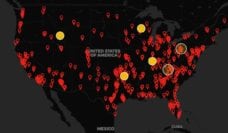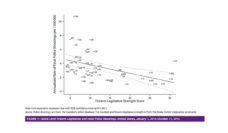Police officers in the US shoot and kill more people every year compared to other high-income countries. Over 1,100 people died in the United States in 2015 during an interaction with law enforcement, and 57,375 years of life were lost. Police violence disproportionately harms people of color and young people.
Justin M. Feldman and colleagues estimated the relationship between rates of police-related deaths and residential segregation by race/ethnicity and income. The researchers hypothesized police violence would be greater in neighborhoods with a higher concentration of economic and racial/ethnic deprivation, whereas more privileged neighborhoods would be protected from police violence. The study analyzed data from the Counted and US census tracts to calculate the five measures of residential polarization depicted above.
The five graphs above show the neighborhood characteristics—splitting economic and racial/ethnic polarization in different ways—and distributions of death related to police incidents from 2015-2016. For example, the first graph in purple shows high- versus low-income households. The highest percentage of deaths occurred in the lowest income households (33.3%), while the highest income households experienced the least amount of deaths (9.9%).
The graph in blue highlights high-income White versus low-income Black households. The highest-income White households experienced the lowest percentage of deaths (8.6%) while the lowest-income Black households experienced the highest percentage of deaths (31.8%).
Neighborhood context matters. Overall, lethal force by police was lowest in the most privileged neighborhoods and highest in neighborhoods with the largest concentrations of low-income residents and residents of color.
Databyte via David Gaitsgory @dgaitsgo. Source for graphic via Justin M. Feldman, Sofia Gruskin, Brent A. Coull, Nancy Krieger, Police-Related Deaths and Neighborhood Economic and Racial/Ethnic Polarization, United States, 2015–2016. American Journal of Public Health (AJPH).














